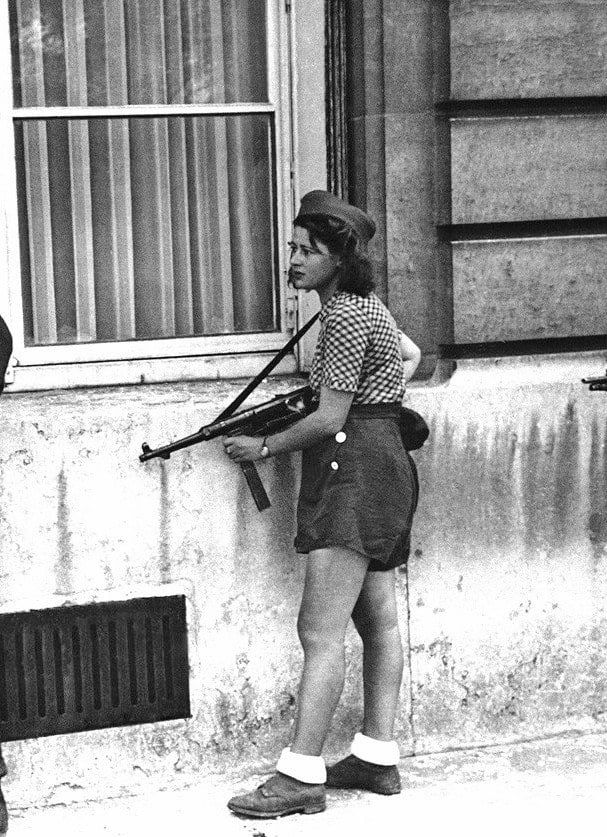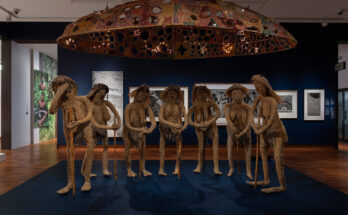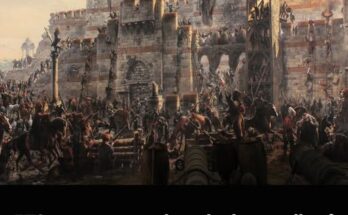
The image you’ve shared is an iconic representation of courage, resilience, and resistance. It captures a young woman, armed and ready, standing vigilantly on a Paris street during one of the most turbulent times in European history—World War II. Her casual attire, resolute stance, and the weapon she carries juxtapose the ordinary and the extraordinary. This is not just a woman on a street—it is a symbol of defiance, patriotism, and the crucial role women played in shaping the modern world.
The photograph is frequently linked to the Liberation of Paris in August 1944, a pivotal moment in the war when French Resistance fighters, known as the Maquis, along with Allied forces, expelled Nazi German troops from the city. Women were instrumental in the Resistance, and this image serves as a tribute to those unsung heroines.
Historical Context
The Nazi Occupation of Paris (1940–1944)
After the fall of France in June 1940, Nazi Germany occupied Paris. The once-vibrant city became a shadow of itself, subdued by the presence of enemy forces and governed by fear, collaboration, and resistance. The German occupation brought censorship, food rationing, forced labor, and the systematic deportation of Jews and political dissidents. The Vichy regime, collaborating with the Nazis, facilitated this oppression.
Despite the dangers, underground resistance movements formed across France. These groups conducted acts of sabotage, gathered intelligence, published underground newspapers, and assisted Allied airmen and Jewish families. Many of these resistance fighters were young, and a significant number were women.
The Role of Women in the French Resistance
Women played diverse roles in the Resistance. Initially, many were relegated to roles such as couriers or nurses. However, as the movement intensified, they took on more active combat roles, smuggled arms, destroyed railway lines, and participated in guerrilla warfare.
Notable figures include:
- Lucie Aubrac, a history teacher who helped organize jailbreaks and coordinated sabotage missions.
- Simone Segouin, also known as Nicole Minet, a young French Resistance fighter who participated in the liberation of Chartres and Paris.
- Marie-Madeleine Fourcade, who led one of the largest intelligence networks for the Allies.
The image you’ve shared may depict someone like Segouin—a young woman who abandoned the confines of gender norms and stepped onto the battlefield of liberation. Their attire was often pragmatic: stolen boots, rolled-up trousers, and military surplus. Their weapons were often captured or handed down by Allied forces.
The Liberation of Paris
By mid-1944, the tide of war was turning. After the successful D-Day landings in Normandy (June 6, 1944), Allied forces advanced through France. In Paris, tension reached a boiling point. The Resistance began an uprising on August 19, 1944, seizing government buildings, sabotaging German supply routes, and engaging in street combat. Women were among the barricade builders and riflemen.
The city was liberated on August 25, 1944, after a week of fierce fighting. General Charles de Gaulle marched down the Champs-Élysées, affirming the return of French sovereignty. This moment was not just military; it was deeply symbolic—the reclaiming of liberty, identity, and dignity.


